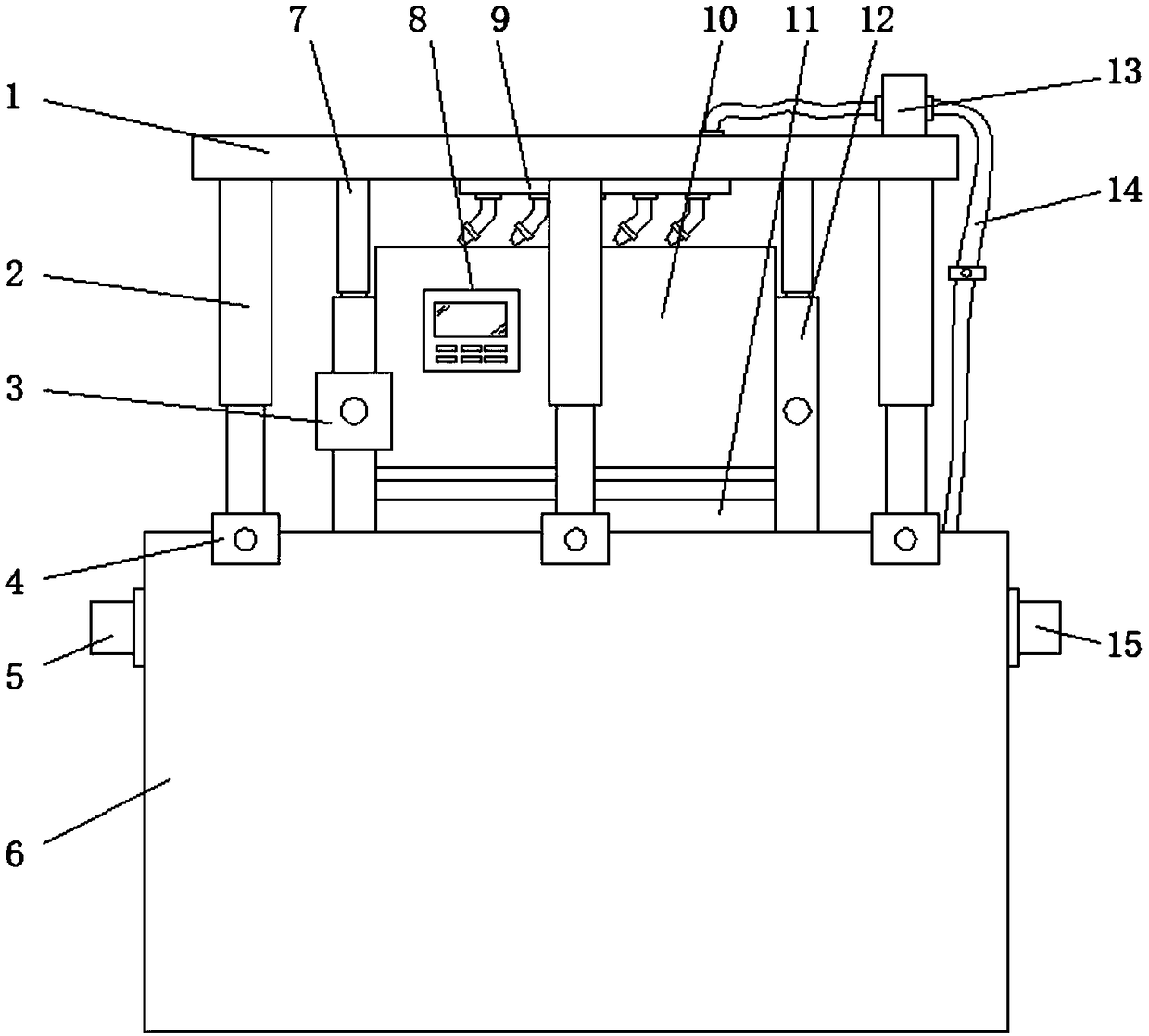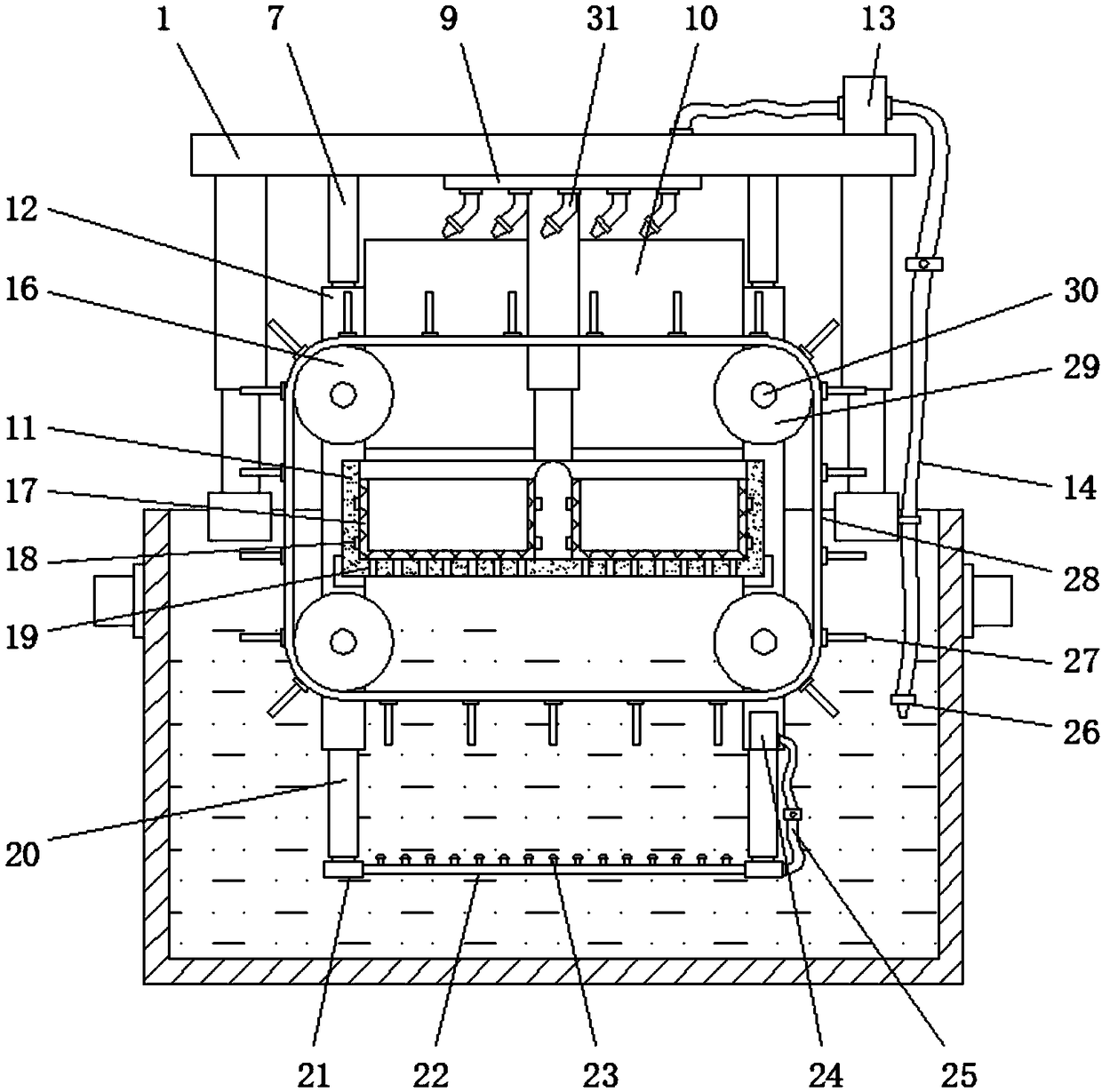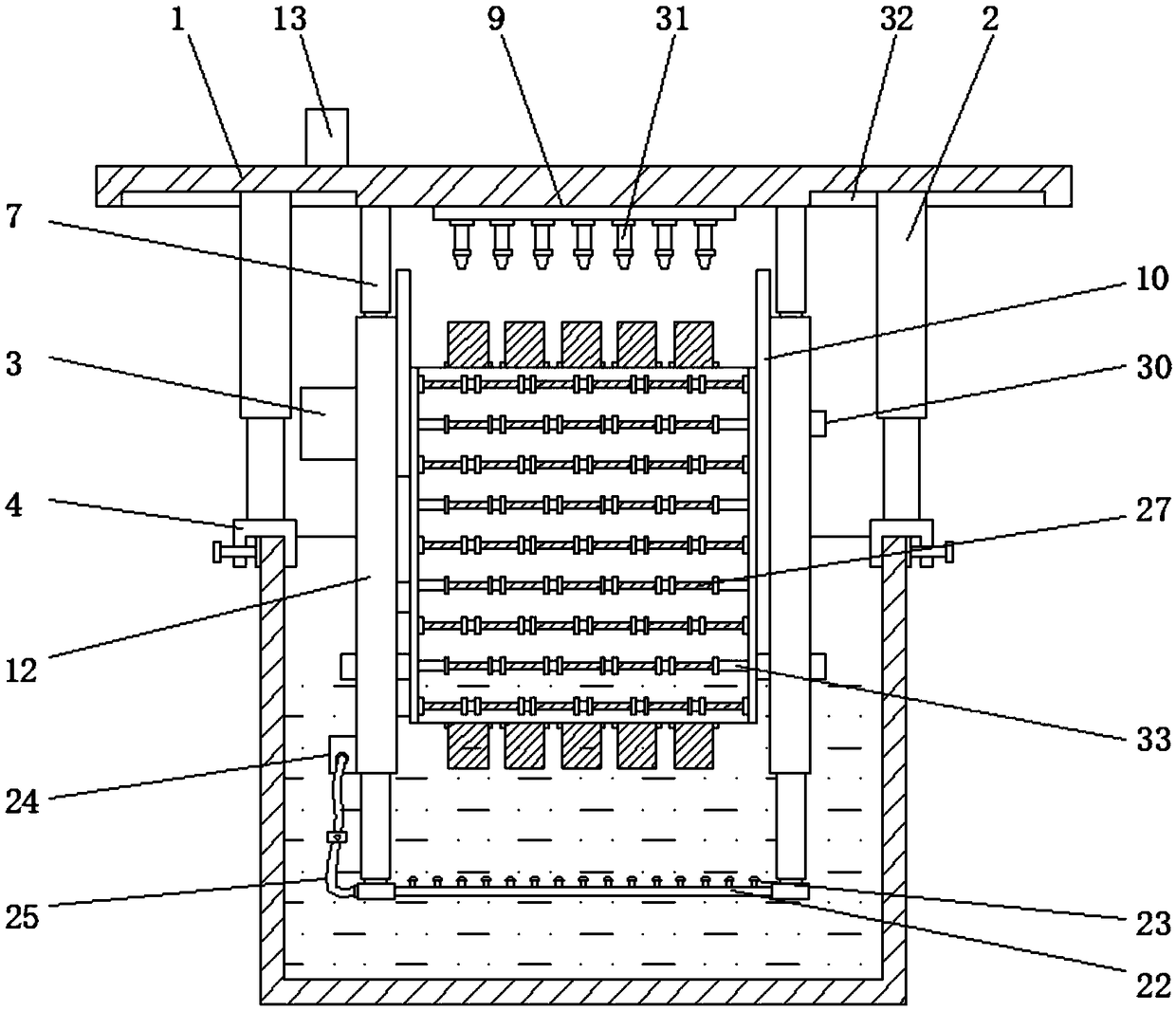Device for cleaning floccules in textile printing and dyeing wastewater
A cleaning device and textile technology, which is applied in textile industry wastewater treatment, grease/oily substance/floating matter removal device, water/sewage treatment, etc., can solve the problems of inconvenient cleaning, waste of resources, inconvenient centralized treatment, etc., and achieve convenient Fixed disassembly, reduced consumption, and reduced difficulty effects
- Summary
- Abstract
- Description
- Claims
- Application Information
AI Technical Summary
Problems solved by technology
Method used
Image
Examples
Embodiment Construction
[0019] The following will clearly and completely describe the technical solutions in the embodiments of the present invention with reference to the accompanying drawings in the embodiments of the present invention. Obviously, the described embodiments are only some, not all, embodiments of the present invention. Based on the embodiments of the present invention, all other embodiments obtained by persons of ordinary skill in the art without making creative efforts belong to the protection scope of the present invention.
[0020] see Figure 1-5 , an embodiment provided by the present invention: a cleaning device for flocs in textile printing and dyeing wastewater, comprising a fixed plate 1, a pool body 6, a collection box 11 and a transmission chain 28, and the two ends of the pool body 6 are respectively installed There are water inlet pipe 5 and water outlet pipe 15, both sides of pool body 6 tops are all evenly installed with fixing seat 4, and the center of fixing seat 4 i...
PUM
 Login to View More
Login to View More Abstract
Description
Claims
Application Information
 Login to View More
Login to View More - Generate Ideas
- Intellectual Property
- Life Sciences
- Materials
- Tech Scout
- Unparalleled Data Quality
- Higher Quality Content
- 60% Fewer Hallucinations
Browse by: Latest US Patents, China's latest patents, Technical Efficacy Thesaurus, Application Domain, Technology Topic, Popular Technical Reports.
© 2025 PatSnap. All rights reserved.Legal|Privacy policy|Modern Slavery Act Transparency Statement|Sitemap|About US| Contact US: help@patsnap.com



